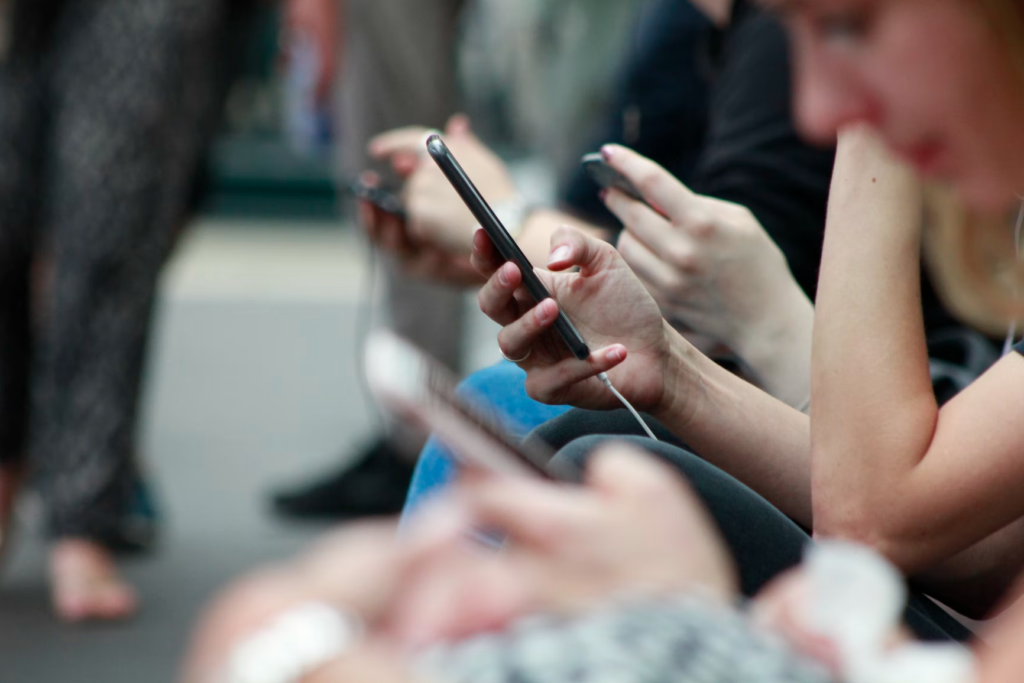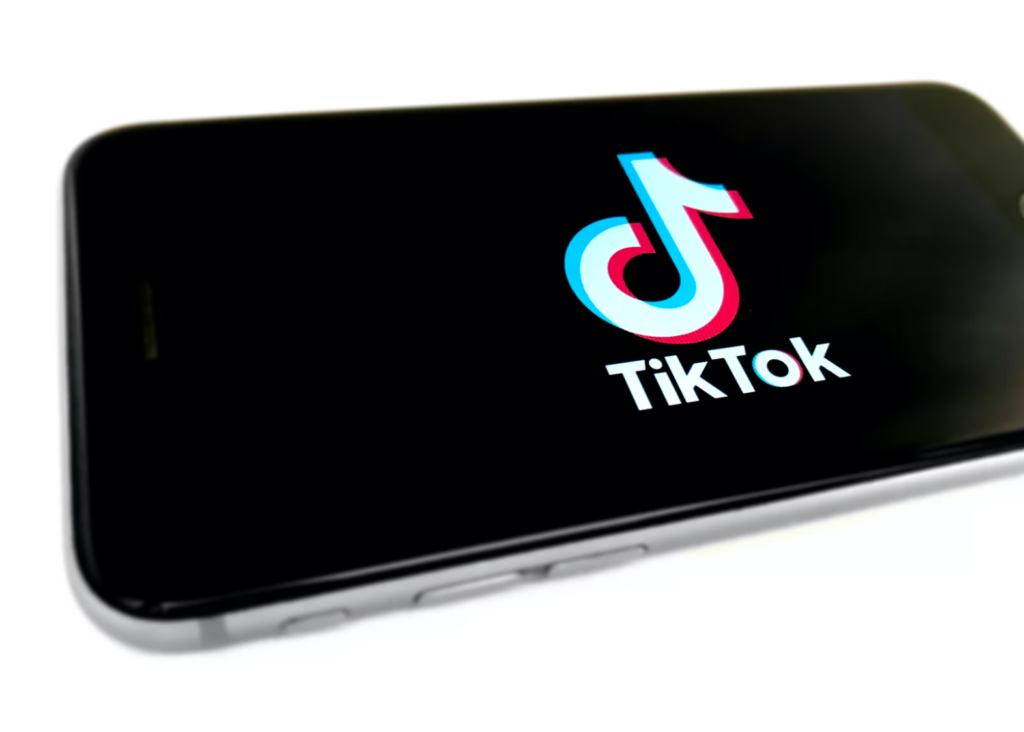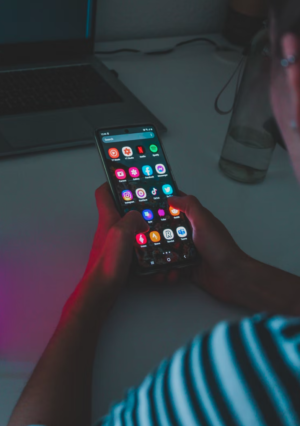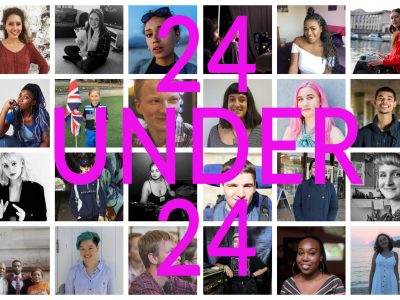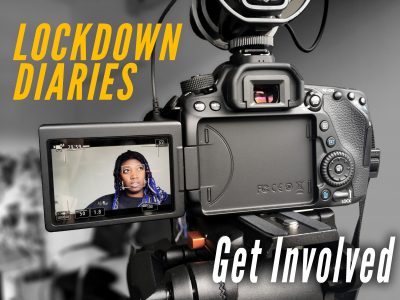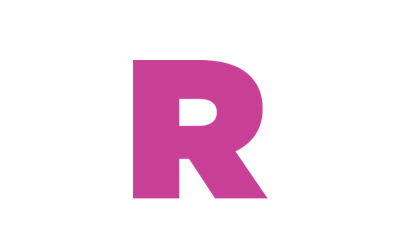In Defence of TikTok: Finding Community in the Endless Scroll
Rife Content Creator Grace Ball explores how community can be found in the unlikeliest of places
TikTok can often be looked down upon. It’s that silly dance app that young people waste hours a week scrolling mindlessly through. I’ll be honest, until recently, that’s what I thought too.
TikTok became the place to go to feel connected
TikTok started in 2018 after being merged with the lip-syncing app Musical.ly, but it wasn’t until 2020 that it really soared in popularity. This was in no doubt due to the Covid-19 pandemic and subsequent lockdowns. People were forced to stay inside, young people no longer able to meet their friends at school or university, so TikTok became the place to go to feel connected. In the UK alone TikTok had over 8.9 million active users in the month of January 2022 (Statista) and TikTok estimates that globally 60% of its users are Gen Z (Social Films).
My journey with TikTok didn’t start until 2021. I was once again late to the party as I am with most social media. However, I did this on purpose as I knew once I downloaded that app it would become another tool for procrastinating. I only downloaded it after I finished the work for my degree, a reward in some sense. My fears came true- it is absolutely another way I procrastinate. So be warned, TikTok can suck up hours of your day without you even noticing.
Aside from its superpower to steal time from under you, TikTok has become a place I turn to for community. My anxiety disorder can make finding community and like-minded people difficult. The lockdowns only worsened this; for everyone, myself included. But as the world locked down, community began to thrive on TikTok. Hundreds of micro-communities have found a home and found a global following on this app.
TikTok more than any other social media feels, to me at least, like the most people powered. It’s the users of TikTok who decide what’s popular and who come up with the trends. Unlike other social media, it isn’t just the stereotypical pretty young women or young handsome men who have a say. This is an app where people are more aware of fighting the algorithm. Whereas on Twitter and Instagram I see what I see and don’t really question it, on TikTok I am constantly saying which videos I don’t like and what topics I’m not interested in. By doing this I’ve curated a more personalised “For You” page, although this did take quite a while so you have to stick with it.
Hashtags are used to unite, highlight, and empower communities
As a first time TikTok user the thing I noticed straight away was the multiple hashtags that videos would be tagged with: #dogsoftiktok, #yarntok, #fishtok, the list is quite literally endless. I was unsure about this reliance on hashtags as my only previous experience of them had been on Twitter where, more often than not, they divide people. It’s different on TikTok. Hashtags are used to unite, highlight, and empower communities. They work effectively to create smaller communities of people that all enjoy the same subject matter.
I’ve always enjoyed reading, so one of my personal favourite hashtags is #booktok. As of writing this article, this hashtag has 46.5 billion views but by the time you’re reading this there will certainly be more. BookTok is the home of book lovers. Users share their favourite books, give recommendations and make relatable content on how it feels when the main character dies or the internal debate you have about whether to get some sleep or read just one more chapter. I love the peaceful, cosy vibes of Booktok. It’s a place of friendly debate and discussion. But perhaps what is most notable about the BookTok community is its influence on the real world of publishing. Books become incredibly popular on Book Tok, so much so that high street shops like The Works and WHSmith have BookTok sections on their websites and in stores.
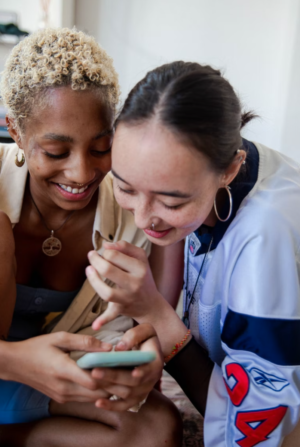
Cain’s Jawbone by Edward Powys Mathers was originally published in 1934. A murder mystery with a twist where all 100 pages are mixed up in order and the reader must tear them out, try and figure out the order, and work out the victims and the murderers. This is so difficult that only four people have ever solved it. In November 2021, when TikTok user Sarah Scannell posted her attempts of trying to solve it, the book’s popularity exploded. Copies of Cain’s Jawbone sold out both on the publisher’s site and Amazon. Orders in the US topped 10,000 copies, and in Canada more than 3,000 copies (The Guardian) and the numbers keep rising to this day. This is only one example of the many books that have benefitted from TikTok and I feel a strange, small sense of pride that a community I’m a part of has had such a positive effect by encouraging people to read books out of their comfort zone or, perhaps, to read at all.
There is something magical when a trend takes hold of TikTok
There is something magical when a trend takes hold of TikTok. A dance, a sound, a viral craze, that brings people from all the smaller communities together as one. However, this effect can sometimes be scary. The desire to feel a part of the club online can feel as real and tangible as it does in real life. This can get out of control and spiral into something more dangerous than fun. A recent fire challenge saw a boy burn 35% of his body, and a blackout challenge encouraged users to hold their breath until they passed out. TikTok as a platform is fairly effective at stopping these challenges. If you search #blackoutchallenge there are no videos, only a link about how to recognise harmful challenges. But of course, the damage can be done before TikTok can take action. It’s sometimes easy to forget that TikTok can be as dangerous as other social media platforms because it feels so different. Any part of the online world has its dangers and it’s worth reiterating to use common sense and to report anything that feels wrong.
But enough of the PSA, because trends really can do amazing things when harnessed in the right way. The biggest one that comes to mind, and the first one I truly experienced in real time, was Ratatouille the Musical. Yes, I mean the 2007 Pixar movie about Remy the rat chef. The trend started when Em Jaccs – a 26-year-old New Yorker – uploaded an innocuous ode to the film’s furry protagonist. It gained over one million views, then something straight out of a Disney movie happened. Daniel Mertzlufft, another TikTok user, adapted the song, giving it the full Broadway treatment. Suddenly TikTok’s community of singers, actors, composers, musicians, dancers, and set designers, all locked in their homes during a pandemic, contributed their own talents. In January 2021, a charity concert of the musical was filmed mainly from people’s homes featuring TikTok users alongside bona fide Broadway stars. It raised over $2,000,000 for The Actor’s Fund, and, if you missed it, you can watch it for free on YouTube. To this day I find myself singing “Remy the ratatouille, the rat of all my dreams” with such fervour you would think I was on a Broadway stage.
it can be a powerful thing to watch so many different people from all walks of life come together through the internet
This began a movement to say that Broadway and musical theatre was for everyone. The Unofficial Bridgerton Musical, created by Barlow and Bear, who shared the process on TikTok, just won a Grammy. If there’s one song you should listen to from this album it has to be ‘If I Were A Man’ which is Eloise’s song. It’s brilliant and very catchy. It was also just announced that TikTok is funding its first original musical, ‘For You, Paige’ led by Daniel Mertzlufft, the Ratatouille visionary himself. Whether trends are as huge as an original musical, or even just a dance or a sound, it can bring people together in a way I’ve never seen before. When done right it can be a powerful thing to watch so many different people from all walks of life come together through the internet.
After fighting the algorithm, pushing past some of the uglier aspects, and following the communities and creators I wanted to see more of, I feel like I’ve finally found the TikTok for me. It’s an app that I don’t post anything on, instead I just lurk unnoticed in the shadows! I use TikTok primarily to watch videos that bring me joy. Videos that I often turn to when I need a smile after a bad day. Videos that I show to my Mum and we have a laugh at together. The world is a scary place right now and, to be honest, it has been for the past three years. TikTok can’t fix what makes the world difficult or what’s playing on your mind, but it can be a distraction. The chaotic beauty of TikTok is that it’s different for everyone. Whatever you like, identify as, spend your free time doing, consider your strengths or weaknesses, there is somewhere on TikTok where you’ll find like-minded people. TikTok truly is one app with thousands of communities.
P.S. If you’ve read this whole thing, you definitely deserve a break! Here are some of my personal favourite TikToks with only the briefest, most obscure of explanations to really pique your curiosity:
- Lamb Singers
- The Cutest Little Dancer
- The Smiling Donkey
- Parrot Dance
- The Best Karaoke Song Choice
- Don’t Bite the Baby
- Where’s Italy?
- Celine Dion
This content was developed as part of Watershed’s The Future is Collective programme, supported by Arts Council England.

